Chinese red tea, called “black tea” outside China, is a strong fermented tea (oxidation levels reach 70-90%). The confusion arises from the fact that the Europeans, who first encountered it in the XVII century, had not got into much detail and simply categorised the whole multitude of varieties based solely on the colour of the infusion - green and black. Obviously, in the homeland of tea, where its history goes back for thousands of years, the distinction between different types of tea is more nuanced. The red tea appeared not a very long time ago by Chinese standards - during the Ming Dynasty, after separation of China from the Mongolian Yuan Empire in the XIV century. The big wave of changes has impacted tea making as well.
Red tea production differs from the more ancient green tea tradition by omitting the stage called "kill-green", 杀青, "sha qing". This frightening name in fact means only a fast high temperature frying of a slightly dried tea leaf. In contrast, when red tea is produced, a slightly dried tea leaf first rolled, kneaded and then heated slowly..
In a healthy tea leaf the vital processes are supported by a variety of enzymes known as antioxidants, polyphenols and tea catechins. When the integrity of the leaf cells is disrupted by crushing and twisting, the life in it starts to fade and catechins rapidly absorb oxygen from the air, transforming into more complex, but no less useful compounds such as tannins, theaflavins, thearubigins and others, whose mission is to inhibit growth of many pathogens. They also give the tea infusion its characteristic red-brown colour. As the temperature raises to 40-50°C the enzymes’ activity increases, then starts decreasing again and ceases completely above 60°C.
Naturally, in medieval China, where red tea was made for the first time, no one was thinking in these terms. Farmers, experimenting with the tea technology (after the production of the famous pressed "Dragon and Phoenix Cakes" had been abolished), have noticed the colour changing from green to red, so they gave this name to the new tea. Red.
The red tea appeared in Fujian in the XVI century (or even earlier), in the mountains of Tong Mu Shan 桐木 山, that are located in close vicinity with Wuyi Shan mountain range, where at about the same time oolong production had been started. Soon after the production has spread to neighbouring regions as well. Qi Hong appeared in Anhui province, Yi Hong in Hubei and Ning Hong in Jiangxi, Hunan in Hunan, Yinghong in Guangdong, Yue Hong in Zhejiang, Su Hong and Yixing in Jiangsu, Dian Hong in Yunnan and others.
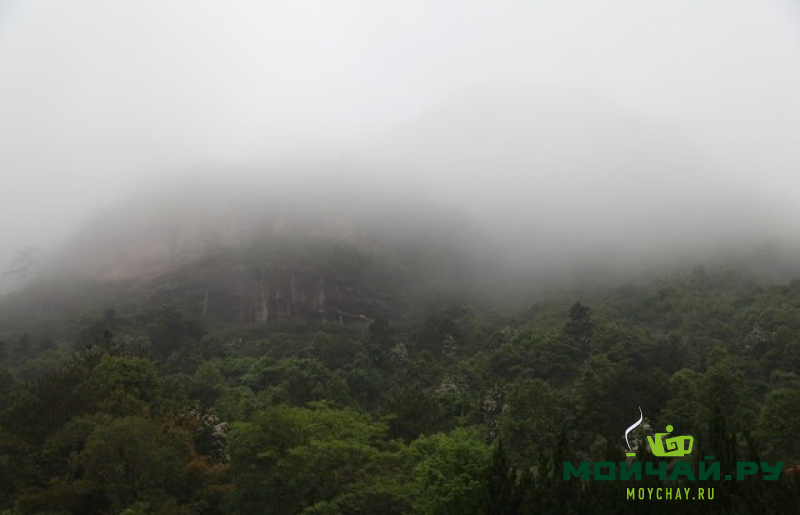
(Photo: Fujian, Wuyi Mountain, the birthplace of red teas "Zheng Shan Xiao Zhong")
Nowadays Chinese red teas are divided into three broad categories:
- "Xiao Zhong" produced at Tongmu Shan mountain using authentic technology involving smoking over the branches of an old pine;
- "Gongfu Hong" produced from the sole buds or buds with one leaf only in a strict accordance with the traditional technology;
- "Hong Sui Cha" or “crushed tea” (CTC - “Crush, Tear and Curl”, and LTP - “Lawrie Tea Processor”, etc.) - grades produced from a fully opened summer leaves or buds gathered using mechanical tools; a slightly dried leaf is cut instead of getting twisted.
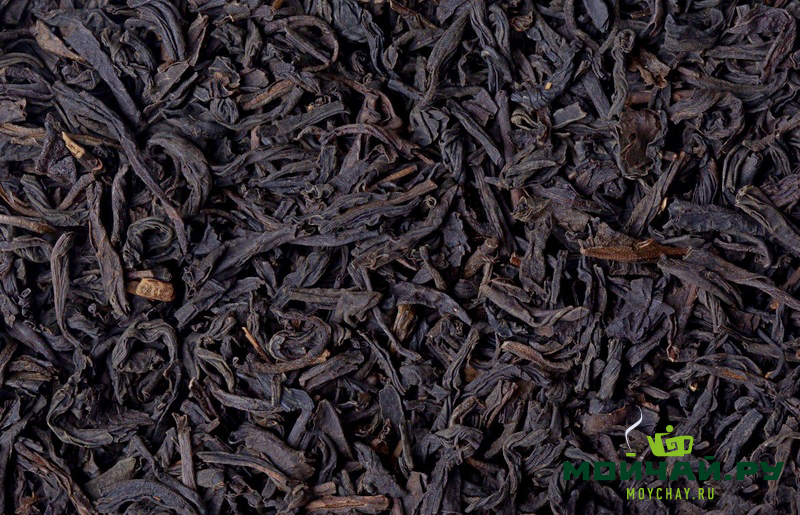
(Photo: red tea "Zheng Shan Xiao Zhong")
Xiao Zhong is produced in a natural reserve Tongmu Guan. The name has stuck for this tea so long time ago that even the local old-timers understand Xiao Zhong in different ways. Some interpret Xiao as “small”, because the tea bushes wildly growing in Tongmu area have relatively small size - both the bush and its leaves. Others defend the view that in this case Xiao means “rare”, because the repeated smoking with a pine charcoal is used only by a very few farms.
Initially the tea was called Lao Song Xiao Zhong (Old Pine - A rare type). The British named it Lapsan Souchong, under which name it is sold in Western countries today. In China these days this kind of tea is known as Zheng Shan Xiao Zhong (Rare Type from the Right Mountains). Clarification “the right” came after the incredibly popular tea had started to be produced far away from its historical homeland. The name of a tea which has been jerked and passed through a long heating on hot coals, usually mentions this: yang song or xun wei - smoked or smoky flavour.
Currently, several techniques are used to create Xiao Zhong. Young fully formed tea leaves (but not the buds!), picked up in May or June are typically used as the source material. The traditional method involves heating the tea twice using an old pine charcoal.
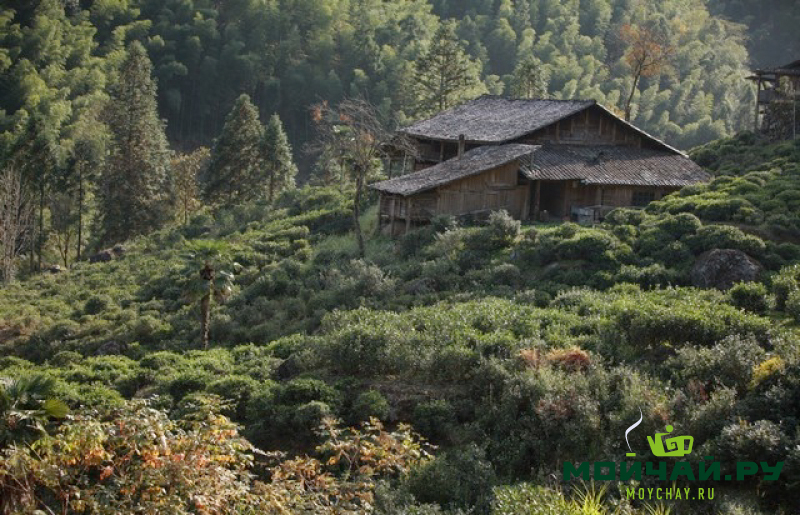
(Photo: farmhouse in the reserve Tongmy where they make tea the traditional technology)
Gongfu hong is a grade which requires a lot of attention, experience and hard work during its production. "Gongfu" in translation from Chinese means "skill". Gongfu hong’s can be large-leaf and fine-leaf(although it would be more correct to say "finely-budded" as the main difference of Gongfu hong from the other teas is that it is made from buds). The finished Gongfu hong looks like a mixture of curved, dark brown and golden-orange wisps, buds are getting golden colour as a result of processing, and the leaves become dark brown colour or almost black. Large-leaf tea varieties have relatively large sized and bright red coloured leaves when dry, so they are often called red-leaf. This category includes Yunnan Dian Hong and some types of Min Hong.
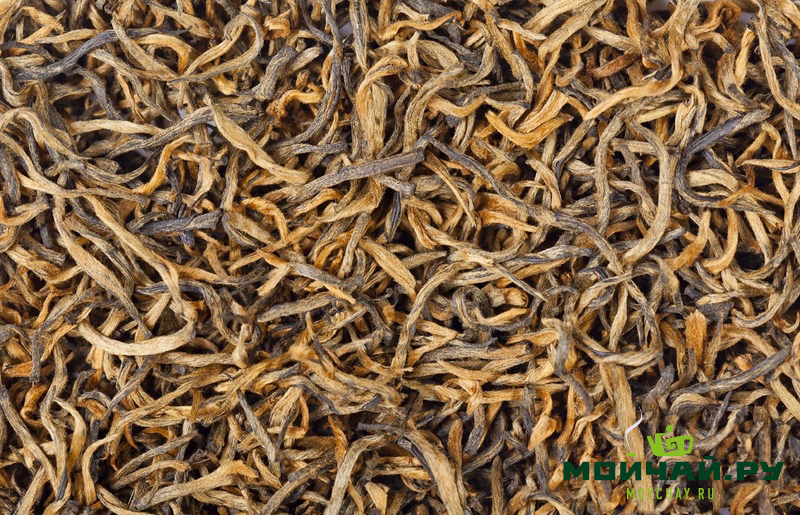
(Photo: large-leaf Dian Hong Mao Feng)
Fine-leaf tea looks like tiny dark brown almost black wisps of twisted leaves and dark red buds, so its other name is black-leaf. These are "Yixing Hong Cha", "Bailin" and others.
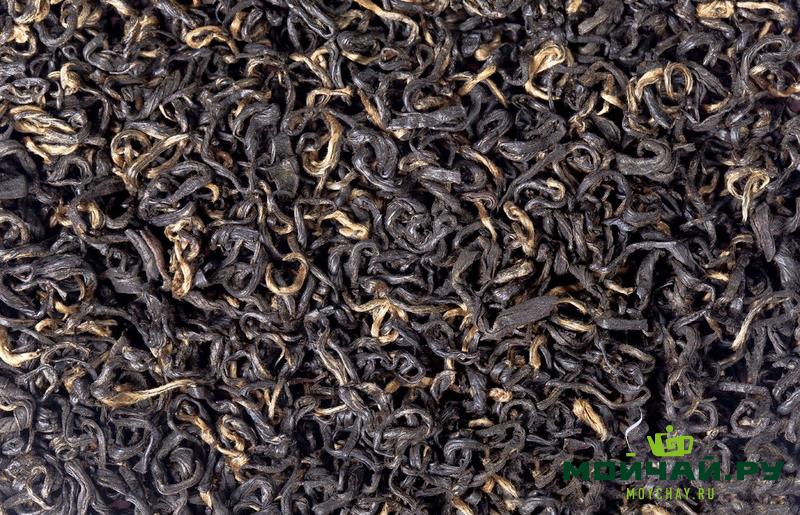
(Photo: fine-leaf Yixing Hong Cha)
The name is usually formed from the toponym of the areas and addition of "Hong Cha", "red tea" or just "red". For example the famous Yunnan "Dian Hong", translated as "Red Tea from Dian" by the name of an ancient Thai kingdom which was located on the territory of the modern province of Yunnan from the IV century BC till the III century AD. A "Min Hong" is the collective name for the red teas of Fujian Province, given in honor of the kingdom Min, which was located in the tenth century at what is now the province of Fujian. Min Hong teas are made in the North of Fujian Province.
Among the famous Gongfu Hong teas is "Qimen Hong Cha", "The red tea from Qimen County", from Anhui province (abbreviated "Qi Hong", in the West known as "Keemun"); "Yixing Hongcha" and "Zhu Hai Jin Ya" from Jiangsu Province; a pearl of Zhejiang province tea business - "Jiu Qu Hong Mei"; "Meng Ding Hong Cha" from Sichuan; "Luan Hong Cha" from Anhui; "Anxi Hong Cha" and "Fuding Hong Cha" from Fujian; "Anji Hong Cha" from Zhejiang; a bright new star of the Tongmu reserve "Jin Jun Mei"; the magnificent "Mei Zhou Gui Fei" from Guangdong, and others. Because of the difference in the source material and nuances of technology, each of them has its own unique taste and consumers.
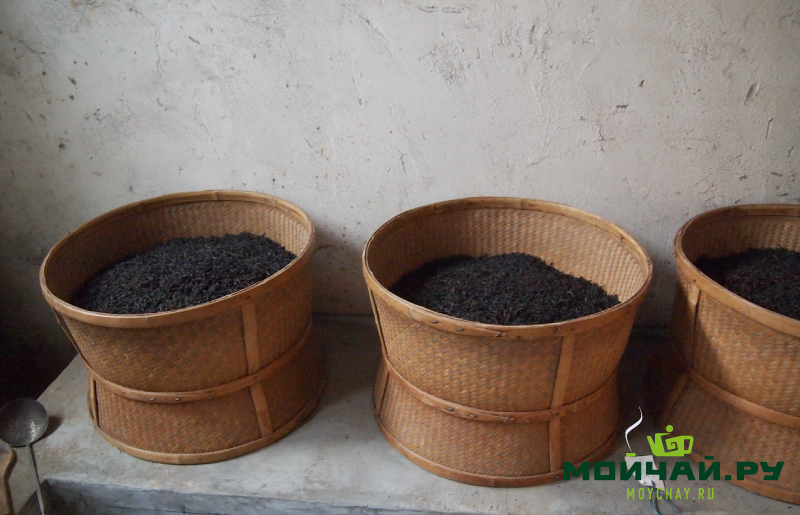
(Photo: warm tea on coal - in the floor under the baskets are holes where smoldering charcoals beneath the ash layer)
Regardless of the grade, the technological process of their production includes four stages: Wei Diao (萎凋) - light drying, Rou Nian (揉捻) - mashing-twisting, Fa Jiao (发酵) - fermentation, and Gan Zao (干燥) - drying. The general rule is - the slower the process of heating and the more moderate the temperature during fermentation and drying, the better the final tea.
The aroma of dry tea is warm, spicy, with honey, fruit, bread and chocolate notes. The colour of the infusion is bright, depending on the grade of the tea it varies from orange and ruby red to cognac and dark brown. The aftertaste is rich, with a pleasant light astringency, refreshing acidity and a long finish.
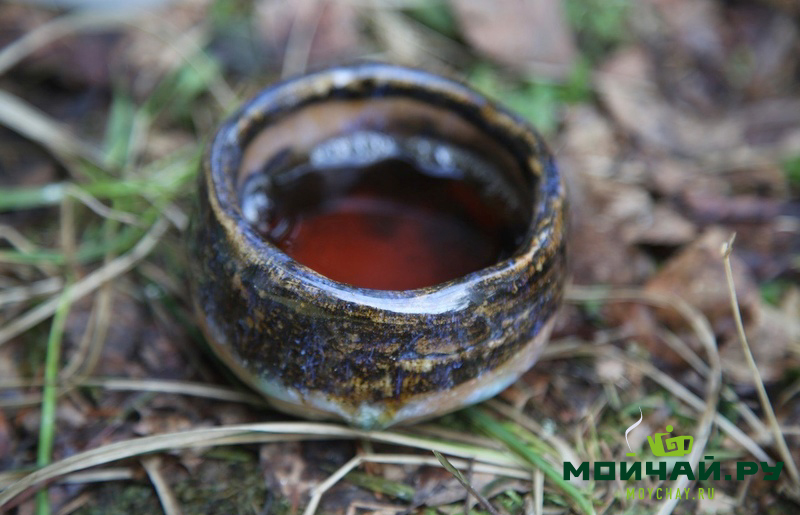
Chinese red tea tones up, activates blood circulation, lowers cholesterol level, breaks down fats and freshens breath. The high content of tannin promotes healing of damaged mucous membranes of the gastrointestinal tract. In addition red tea is a natural antidepressant that relieves irritability and psychosomatic stress, leaving a feeling of peace and inner comfort. The Chinese say that it "raises the heat in the heart," which means “warms the body and gives a feeling of warmth in your soul”. Red tea is especially beneficial for the "cold" type of people (susceptible to cold, fatigue and sleepiness). And for everyone else it is the best choice in the cold season!
In our shop you will find a wide selection of red tea of the highest quality.